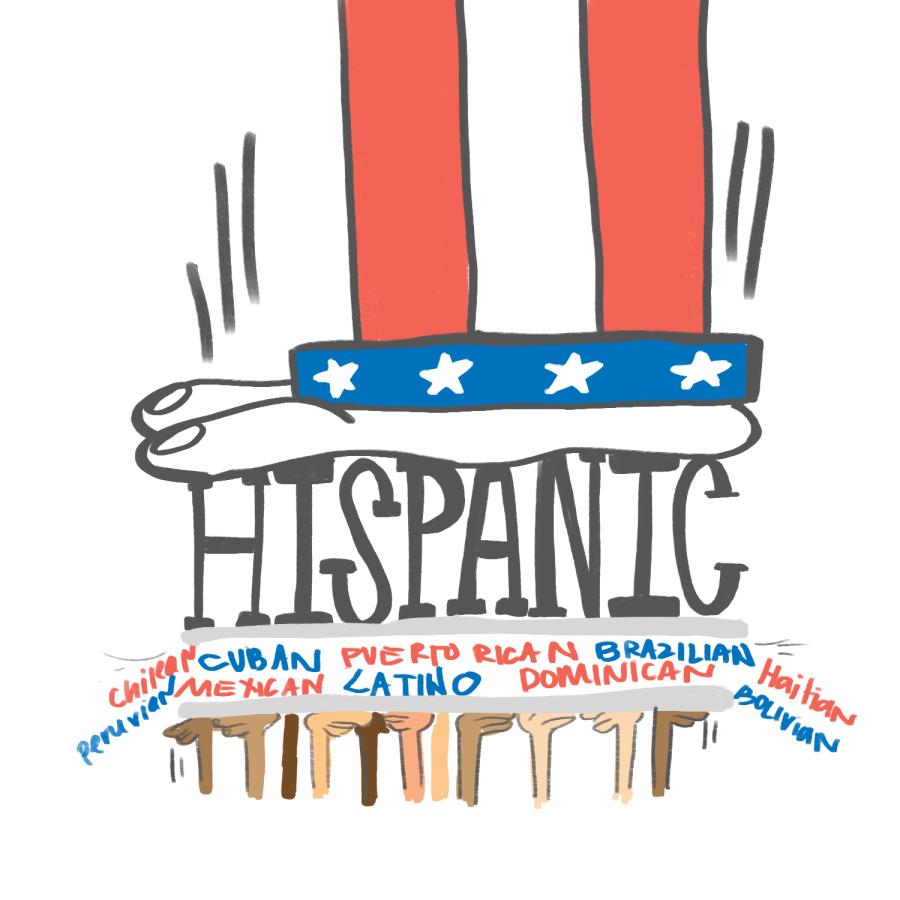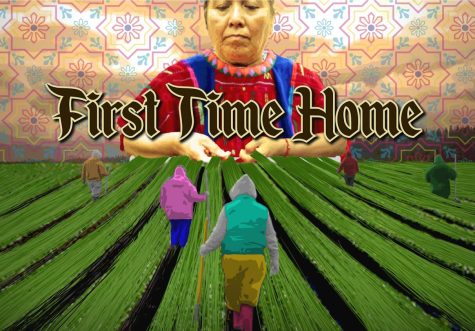The ‘Hispanic’ blanket term is not that warm
October 10, 2014
A brown, wooden bat swung blindly hits its mark. A paper-mache donkey bursts open, spilling its delicious, colorful contents to the ground. All the children laugh, scream and dive for the candy.
After all, it is a celebration.
In barrios across the U.S., between Sept. 15 to Oct. 15., this could be a common sight; it is National Hispanic Heritage month, a celebration, according to hispanicheritagemonth.gov,, of “histories, cultures and contributions of American citizens whose ancestors came from Spain, Mexico, the Caribbean and Central and South America.”
According to the latest U.S. census, over 17 percent of America’s nearly 320 million person population are so-called ”Hispanics,” making up the biggest minority group in the U.S.
But what does the term “Hispanic” even mean?
The term Hispanic, like the term Latino, was created as a sort of blanket term that includes people from North, South, and Central America, the Caribbean and with roots reaching back to the Spanish colonization of the new world.
For some, it is not a positive definition.
“The term Hispanic is misleading,” Dr. Elisa Facio Director of EWU’s Chicano Education Program, said. “‘Hispanic’ represents 26 different countries.”
Dr. Martín Meráz García, EWU professor of Chicano studies, said the term makes him a bit uncomfortable.
“I have multiple identities,” García said. “I identify myself, of course, as a Chicano. I also identify myself as a Latino. I identify myself as Mexican. I sometimes answer to Mexican-American. And, at times, I also find myself having to say, ‘Yes, I am,’ to the term Hispanic.”
García said the reason the term Hispanic is uncomfortable for him is because he knows the academic definition and the implication it carries.
“We live in a country where we want to collect data,” García said. “So the best way they thought about doing that was to identify a term and put all these different groups under that category.”
Facio also said that the term was imposed by the U.S. government, a generalization that makes the census easier.
So, “Hispanic” appears on the U.S. census as a term broadly lumping Spanish speaking (and sometimes Portuguese speaking, as Brazilians have no other box to check) people who share a similar culture into a group regardless of their race or preference.
Over 50 million Americans checked that box for the 2012 census. Whether they identified as Latino, Chicano, Mexican-American, Cuban-American, Puerto Rican, they all laid down under the “Hispanic” blanket.
Identity can be very complex, but there is a history behind these terms, even Hispanic.
García said that the term came out of the Lyndon B. Johnson administration and that most Chicano scholars would agree that it was an imposed term. García said when an entity, like the U.S. government, has the money and power to print millions of forms and leave a large diverse group with only one option, it can hardly be called anything but imposing. García said that some Hispanic scholars would disagree and claim that Hispanics within the Johnson administration were appointed to create the term.
The main reason García said Chicanos find the term negative is simple: It is associated with the Spanish, the first Europeans who came to conquer the New World. It ignores and denies the Native American roots of the Mestizo, or mix of the Spanish and Native Americans.
From the 1960s through the 1970s, García said the Hispanic identity was a tool to avoid discrimination. If a person played up the European aspects of their identity, it was easier to blend in and be accepted by the dominant group.
This brings up other questions of identity.
García said that according to Chicano scholars, the term Chicano was originally used to differentiate between Mexicans who were living in the U.S. after the Spanish American War in the late 1840s but later became associated with Mexican-Americans who were inclined to activism.
A Mexican-American identity usually refers to an American of Mexican ancestry, a term that was also used to differentiate between American-born Mexicans and Mexican nationals.
Latino is a term used in much the same way as Hispanic for people of Latin American descent, such as people from Puerto Rico and Cuba. The term is considered more inclusive than the term Hispanic, though according to García, some Chicano scholars would disagree, because it is also used as a blanket term.
Facio also reminds students that the term Hispanic spans such a large geographic space that nationalities are often confused with Hispanic as an ethnic term.
“Mexico is not like Bolivia,” Facio said. “Cuba is not like Puerto Rico.”
In his classes, García said he encourages all of his students to explore identities. “It’s okay to identify with more than one label,” he said.
This extends beyond just the identities associated with so-called “Hispanics.” He said after taking his class, he finds students taking interests in their roots all over the world.
The term Hispanic is like the piñata: You have to break it open to get all the flavors of candy inside.



















